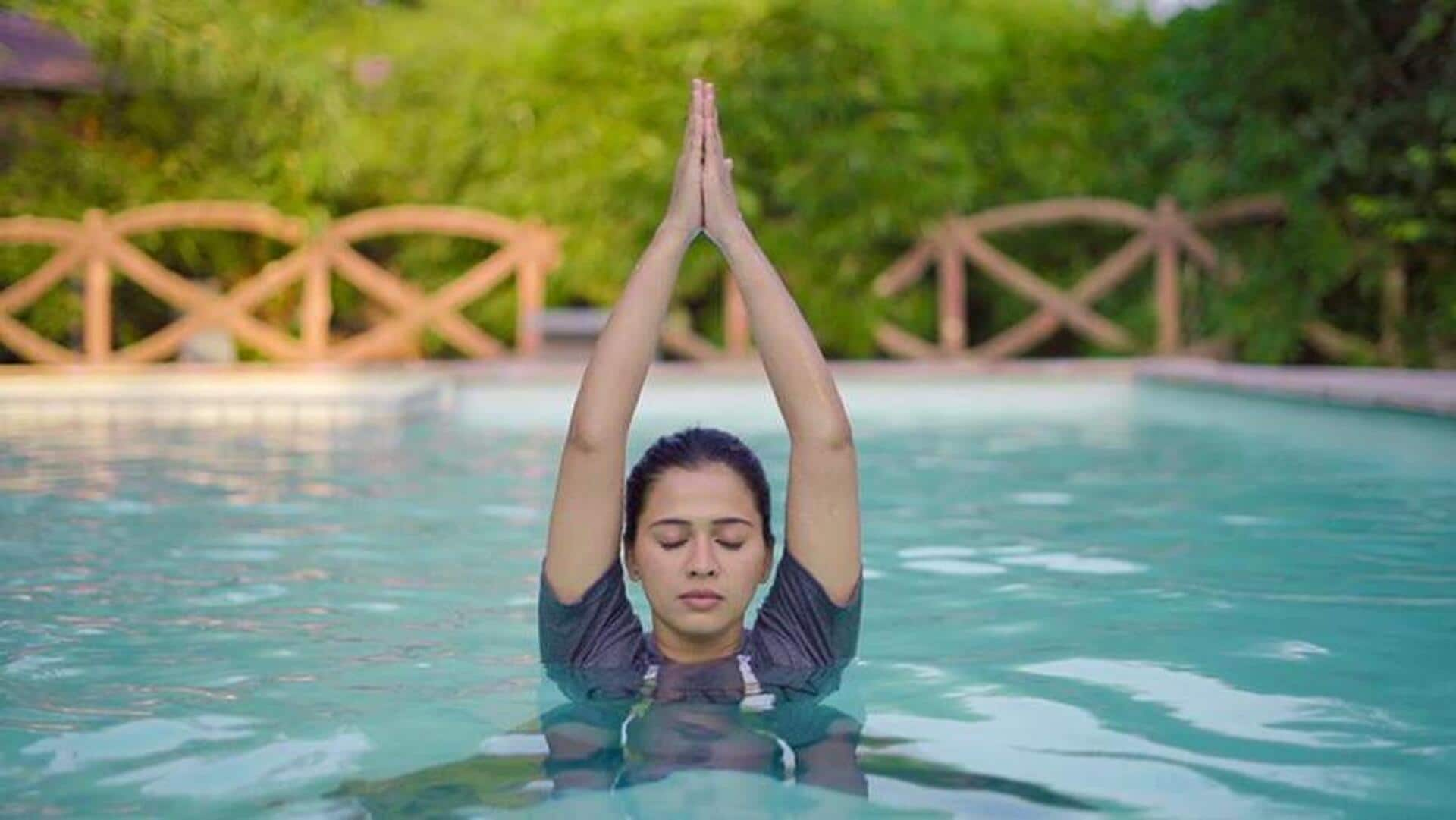
Aqua yoga: 5 health benefits you didn't know
What's the story
Aqua yoga, a unique blend of yoga and water exercises, is gaining popularity for its numerous health benefits. Practiced in shallow water, this form of yoga offers a low-impact workout that is gentle on the joints and muscles. It combines the calming effects of yoga with the buoyancy of water, making it accessible to people of all ages and fitness levels. Here are five surprising health benefits of aqua yoga.
#1
Enhances flexibility and balance
Aqua yoga also helps improve flexibility and balance. The resistance offered by water makes muscles work harder to maintain poses, which improves flexibility over time. The instability of water also challenges balance, making practitioners more stable on land. This benefit is especially useful for older adults or those recovering from injuries.
#2
Reduces stress and anxiety
The soothing environment of aqua yoga also helps in reducing stress and anxiety levels. The rhythmic movements and deep breathing techniques used in yoga promote relaxation responses in the body. Being submerged in water further enhances these effects by lowering cortisol levels, which is a hormone associated with stress.
#3
Improves cardiovascular health
Aqua yoga is also a great way to improve cardiovascular health. The aerobic nature of the exercise increases heart rate without putting too much pressure on joints. Regular practice can improve circulation, lower blood pressure, and increase overall cardiovascular endurance.
#4
Supports weight management
Practicing aqua yoga regularly can help you manage your weight effectively. The combination of resistance training and aerobic exercise burns calories efficiently while building muscle tone. Since the buoyancy of water reduces impact on joints, it makes it easier for people with mobility issues or those who are overweight to engage in regular physical activity.
#5
Enhances core strength
Aqua yoga also strengthens core muscles as practitioners engage their abdominal muscles to maintain stability in various poses. The resistance offered by water requires more effort from these muscles than on land exercises would require alone. This results in improved posture, balance, and overall core strength over time.